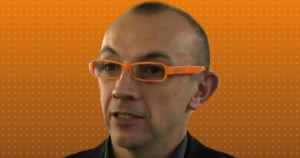
We are living in the era of content. Every day, we are exposed (and usually overexposed) to a never-ending number of marketing messages that are trying to reach us with a variety of purposes: from brand awareness, to informational or educational content, to pure conversion-seeking communications.
According to Omnicore, on a daily basis, 500 million tweets, 55 million status updates on Facebook and 95 million pictures on Instagram are published, together with more than 4 million blog posts worldwide – with this amount of content, it is getting more complicated to stand out from the crowd, and sometimes our marketing strategy turns into an attention-seeking contest.
As per the content shock theory, by Mark Schaefer, it has been demonstrated that the demand and offer of content out there do not match. Nowadays, the amount of content offered is much higher than what users are able to consume or happy to interact with. Therefore, we have to make sure the pieces of content we create are relevant and compelling to our target audience. But it is not only about the content itself – usually, the process and strategy behind it are as important as the specific piece of content.
This blog post will provide you with some tips on how to improve your content marketing strategy.
Firstly, based on the framework developed by Matt Siltala, there are four factors we have to take into account:
- Motion graphics: They add an extra layer of interactivity and help to make the calls-to-action (CTAs) more prominent. Also, they make the overall content more appealing and visually attractive.
- Infograms: In other words, creating little snippets of visual content that can be used as a teaser on social media, so users can get a snapshot straight away and later on, if they want, they can access the full version after proceeding with a valuable action for your brand or business.
- Internal involvement: When creating content, involve as many departments as possible. This will enrich the content as different points of view will be covered. This usually leads to better results, especially on social media.
- Diversification: When a certain piece of content is successful, it is advisable to create more content around it, in different formats and channels: it will help to continuously engage with the user in different ways, or to attract different users that are more eager to interact with one format or willing to consume content in a specific channel. For example, if a whitepaper is being notably accepted by the public, creating a podcast about it can help to strengthen its impact. In order to do that, the usage of evergreen content techniques helps to keep the content updated and fresh.
Additionally, from a more global perspective, there are other factors that we have to consider when putting together any global content marketing strategy, as per the guidelines from John Brasington on how to create value-led content for your ecosystem:
- Objective: It seems obvious, but defining a clear objective for your content strategy is often forgotten or devalued. This needs to be the first step, as depending on the objective, you will tailor or adapt your content in one way or another. It is not the same to create an in-depth guide or to write a short blog article with the most popular user-generated content on your Facebook page in a certain month. The strategy has to substantially differ from a very early stage.
- Create an ecosystem: Every piece of content has to be designed whilst keeping in mind how it could impact your ecosystem (your brand image, your mission statement, your values, the existing content, and how this content refers to each other and interconnects) and has to be contextualised in that ecosystem. Putting it differently, your content has to seamlessly integrate with what has been done so far, for the whole thing to remain consistent. You can have complementary content, neutral content and conflicting content – and each of these has to be managed accordingly. For example, if you have conflicting content where you have optimised a blog post for a keyword, and that keyword is ranking for that URL, then you should not use that keyword for any other post, to protect that ranking. You should also ensure that you have an appropriate internal linking strategy in place and that this is optimised considering the contextualisation planned – this will particularly help you to increase the share of voice of your brand.
- Content hub: Your strategy has to aim to transform your website into the content hub of your sector or industry, being a knowledge reference for the target audience and the whole vertical in general. All category, subcategory and product pages have to be optimised following this premise. This way, the reach of your content will dramatically increase and the conversion potential as well.
To conclude, the state of content is quite complicated at the moment: the content available, both offline and especially online, is significantly higher than the content demand in pretty much every sector or theme. As a result, not all the content that is produced is consumed, which means that the ROI potential of a new piece of content is not as exceptional as it was in the past. To overcome this trend, it is essential to define the objective of your content strategy, to be practical, original, to pay special attention to on-page optimisation (considering voice search as a major evolving trend) and to contextualise your content, creating a clear structure with rational internal linking, trying to create a content hub to become a strong reference in your business area.
David Sánchez González
Latest posts by David Sánchez González (see all)
- International content marketing: To centralise or decentralise? - December 11, 2019
- Three tips for hotels wanting to increase direct online bookings - December 10, 2019
- Tips to improve your content marketing strategy - January 18, 2019





